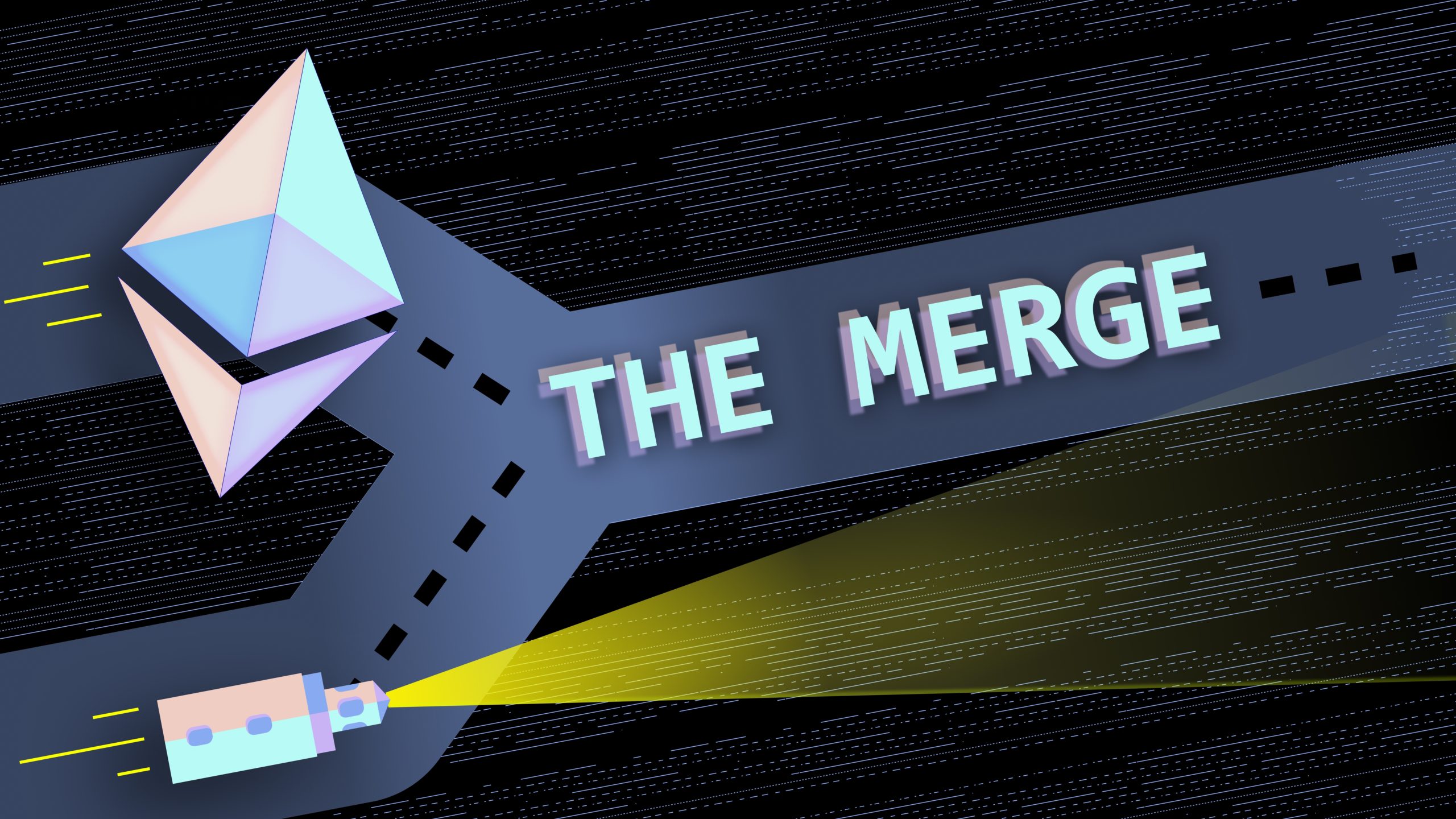One of the most anticipated upgrades in the history of the cryptocurrency sector is now live. Though there have been delays, the “Ethereum Merge” passed several vital milestones this summer and has successfully launched as of September 15th, 2022.
There is a lot of misinformation about “The Merge,” so let’s separate fact from fiction. This article will walk you through the most important things you need to know about the Ethereum Merge.
Learn precisely how “The Merge” works, the most common misconceptions, the key benefits, and what it means for ETH holders.
How Does The Merge Exactly Work?
Merging ETH2 is accomplished by taking the existing execution layer, the Mainnet, on Ethereum or ETH1, which currently determines block validity, and moving it to the new Beacon chain consensus layer.
Unlike ETH1, ETH2 validates transactions using proof-of-stake (PoS) rather than proof-of-work (PoW). As a result of this change to PoS validation, the ETH2 chain will be much more energy efficient.
The ETH1 chain will remain operational but will no longer validate transactions. ETH1 will also no longer produce new blocks on the blockchain.
There is no need to distinguish between ETH1 and ETH2 because they merged into one, just known as “Ethereum” in the post-merge era. A simple way to think of it is using the community’s breakdown of “Post Merge Ethereum,” which consists of:
- ETH1 is now the ‘execution layer,’ which handles transactions and execution.
- ETH2 is now the ‘consensus layer,’ which manages proof-of-stake consensus.
Three Common Misconceptions About “The Merge”
- The Merge will reduce gas fees. “The Merge” is a change of the consensus mechanism. It does away with energy-intensive mining. Gas fees are predicated on the supply and demand mechanics of the network. Some initiatives specifically address “Gas Fees,” which are the overall layer two scaling solutions with an estimated completion time in 2023 – 2024.
- “You can withdraw staked ETH since The Merge is live.” Many have been waiting and looking forward to the merge because they believe that once “The Merge” executes, they will be able to withdraw their ETH. This assumption is false. Rather, staking withdrawals will not be available until the Shanghai Upgrade is complete.
- “The Merge made the network transactions process much faster.” The greater transaction speed claim can be easily debunked because the transactions are processed on the ETH1 layer. “The Merge” slightly improves speed but is so minimal that most users likely won’t notice. Essentially, the speed will be the same since the same layer processing transactions before “The Merge” is still managing transactions now.
Key Benefits of “The Merge”
Beyond the benefits to Ethereum users (and the environment), “The Merge” will have significant advantages for those holding Ethereum. Namely, because the new system operates by staking Ethereum to a verifier node, holders willing to simply lock up their capital may be able to earn significant in-kind returns.
Among many other benefits, according to ethereum.org, staking rewards for staking Ethereum to its network is expected to increase by approximately 50%. As such, anyone holding Ethereum can now access greater returns on their holdings while supporting the future of the broader network.
While estimates vary for post-merge staking yield, analysts across the industry are projecting the APR rate to increase from 3% to anywhere between 10% and 15% once the update is completed.
Beyond the benefits to Ethereum users (and the environment), “The Merge” will have significant advantages for those holding Ethereum. Namely, because the new system operates by staking Ethereum to a verifier node, holders willing to simply lock up their capital may be able to earn significant in-kind returns.
Among many other benefits, according to ethereum.org, staking rewards for staking Ethereum to its network is expected to increase by approximately 50%. As such, anyone holding Ethereum can now access greater returns on their holdings while supporting the future of the broader network.
While estimates vary for post-merge staking yield, analysts across the industry are projecting the APR rate to increase from 3% to anywhere between 10% and 15% once the update is completed.
What does this mean for ETH HOLDERS?
You may be wondering, “Do I need to do anything to ensure my Ethereum has migrated adequately onto the new chain?” No, there is no action required on your part. This is true whether you are holding your ETH on a centralized exchange or decentralized wallet. Be cautious and avoid scams claiming you’ll need to convert your ETH holdings post-merge.
ETH holders can now quickly become nodes in the new PoS consensus mechanism. By simply staking ETH, you have the opportunity to become a validator. As of now, no minimum ETH needs to be staked to become a node.
Conclusion
Post-Merge, we at Abra are optimistic that Ethereum staking will generate institutional interest, enabling Ethereum to be seen as a substitute for more familiar fixed-income assets such as government bonds.
Download AbraAbout Abra
Established in 2014, Abra is on a mission to create a simple and honest platform that enables millions of cryptocurrency holders to maximize the potential of their assets. Abra enables both individuals and businesses to safely and securely buy, trade, and borrow against cryptocurrencies – all in one place. Abra’s vision is an open, global financial system that is easily accessible to everyone.
Why Abra
Based in the United States, Abra is available in over 150 countries and makes it easy to convert between crypto and a wide variety of local fiat currencies. With over 2MM customers, $7B in transactions processed, and $1.5B in assets under management, Abra continues to grow rapidly. Abra is widely loved and trusted – in April 2022, pymnts.com reviewed and rated Abra amongst the top 5 most popular crypto wallets in the market. Abra is backed by top-tier investors such as American Express Ventures and First Round Capital.
How Abra Protects Your Funds
Abra places clients’ financial objectives and security first. Abra practices a culture of risk management across all levels and functions within the organization.
Abra employs a state-of-the-art enterprise risk management framework that comprises a comprehensive set of policies, procedures, and practices detailing all applicable risk-related objectives and constraints for the entirety of the business. Abra has instituted a complete set of requisite systems and controls that continuously enforce these policies, procedures, and practices to manage all operations, including credit and lending. Abra’s independent Risk Committee comprises experienced compliance, risk, securities, and fraud operations professionals with backgrounds in industries ranging from traditional and digital assets banking, payments, remittance, to fintech.
Please visit our FAQ to learn more.


